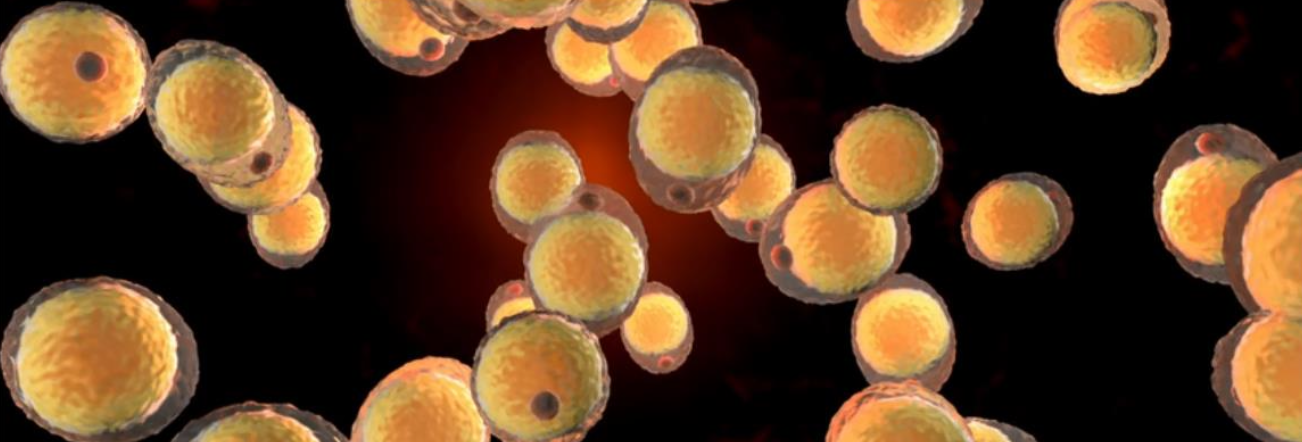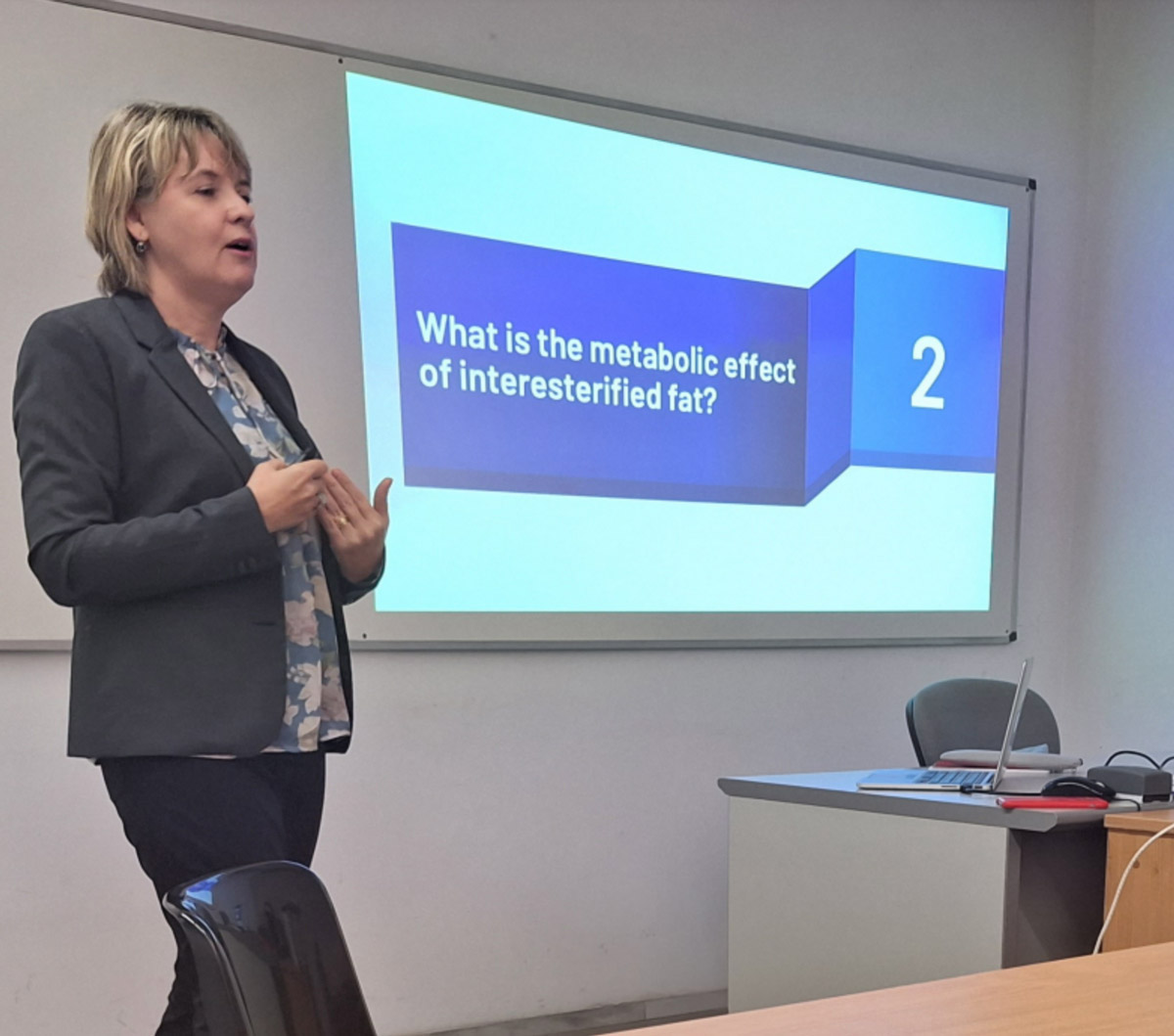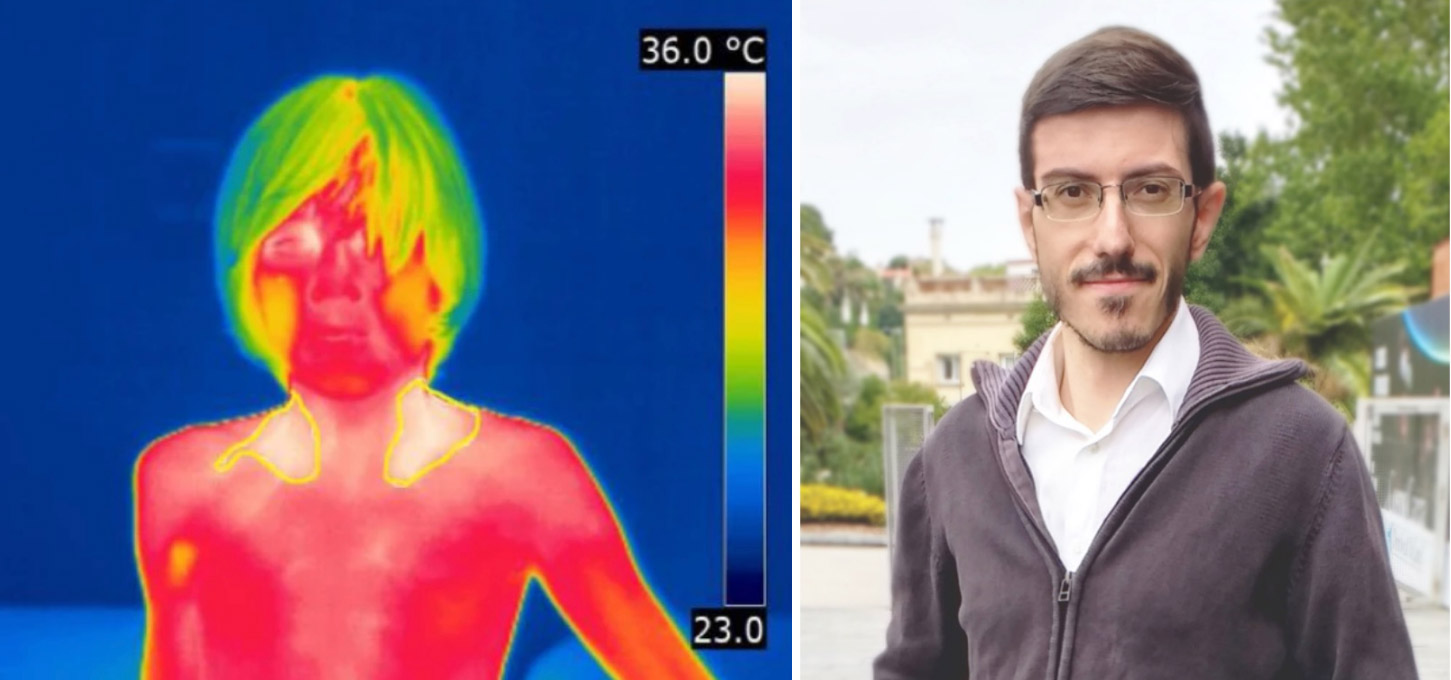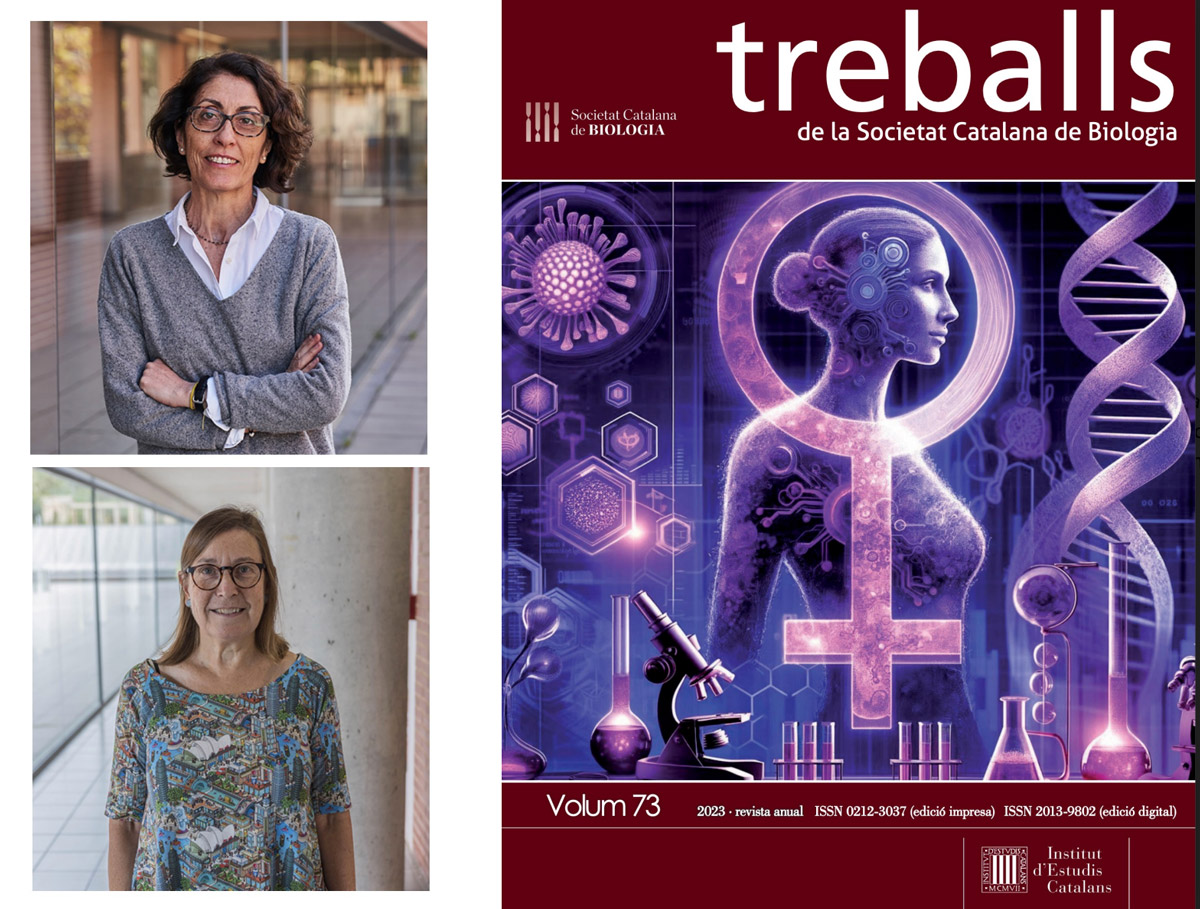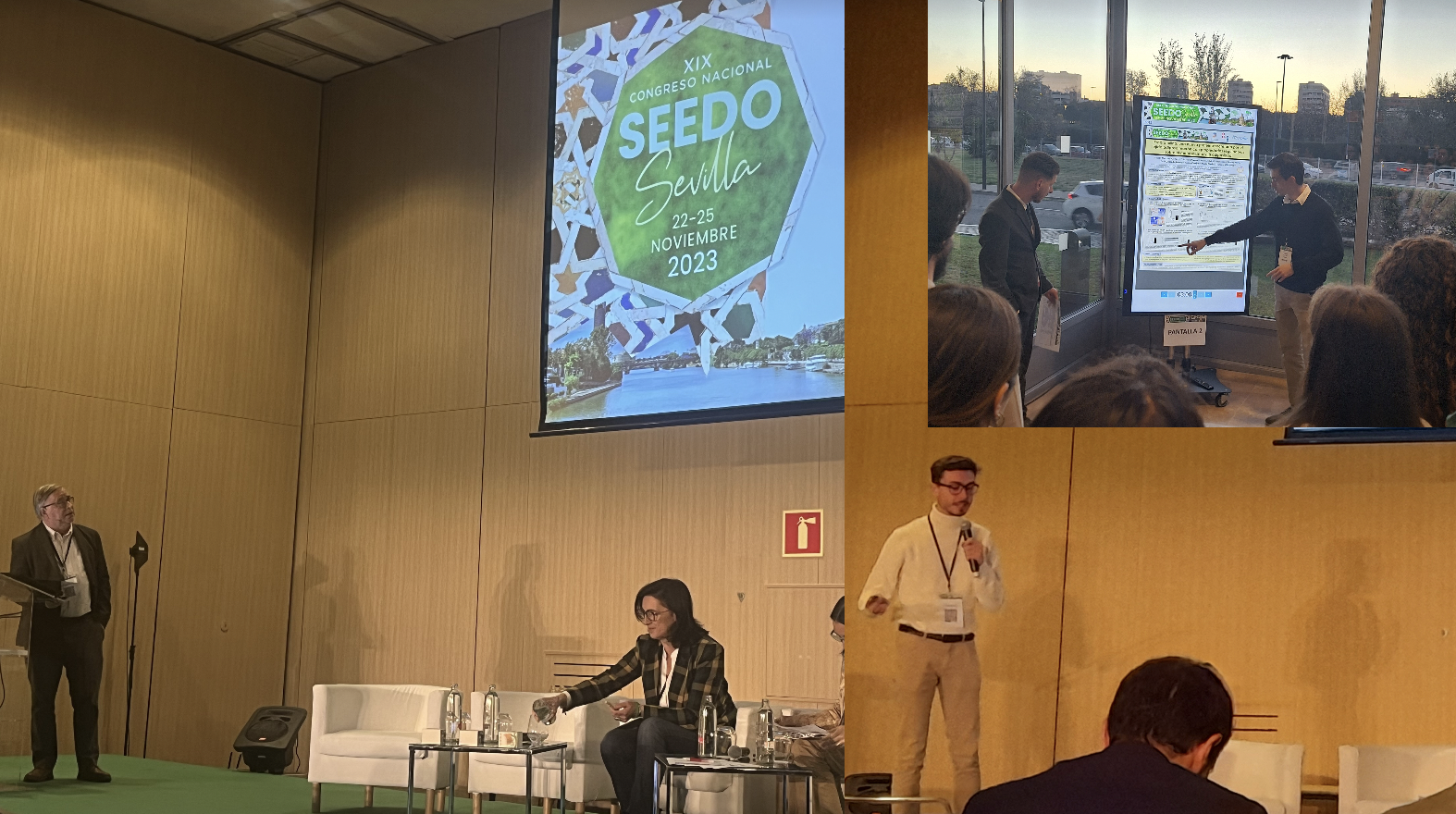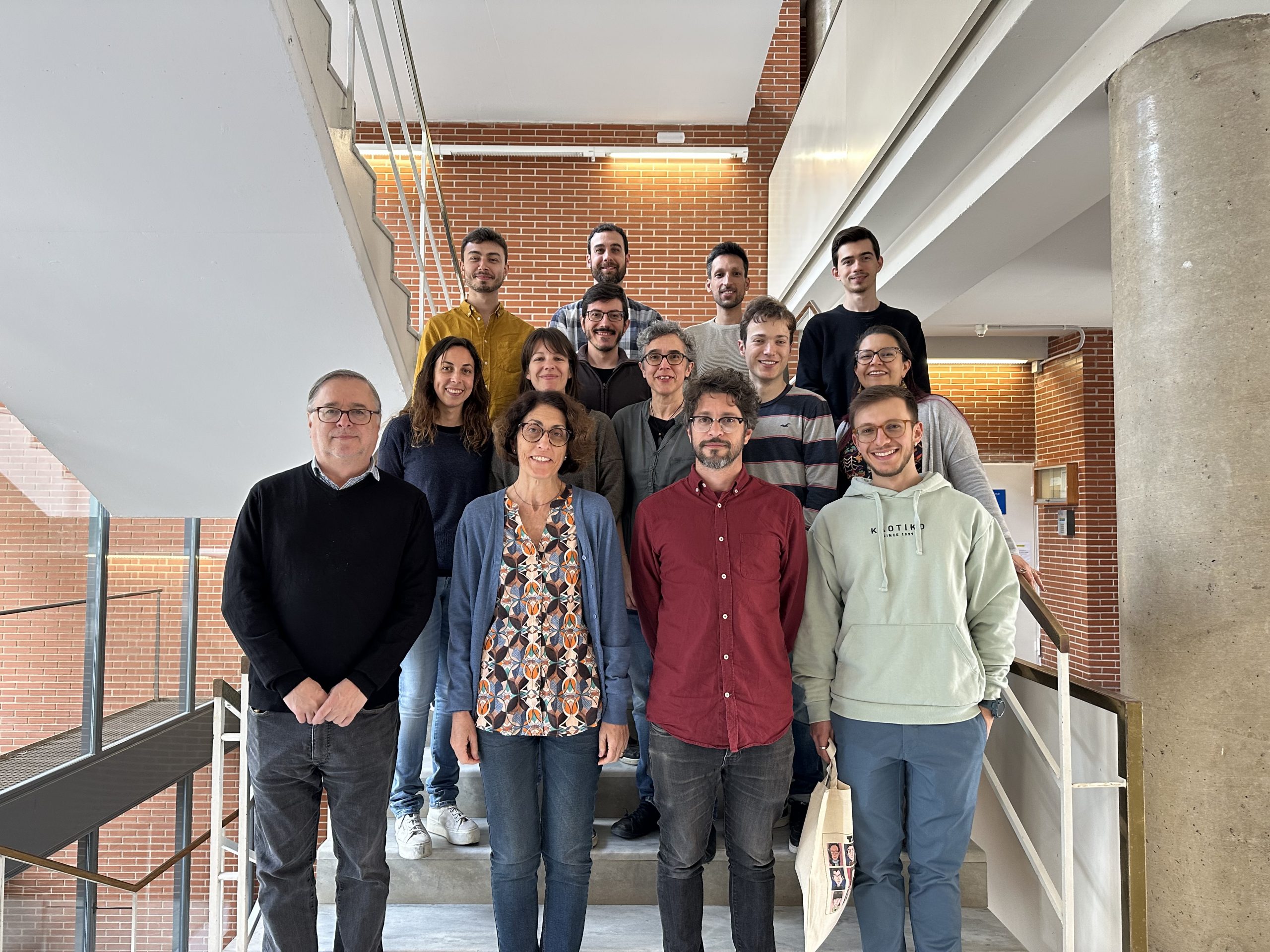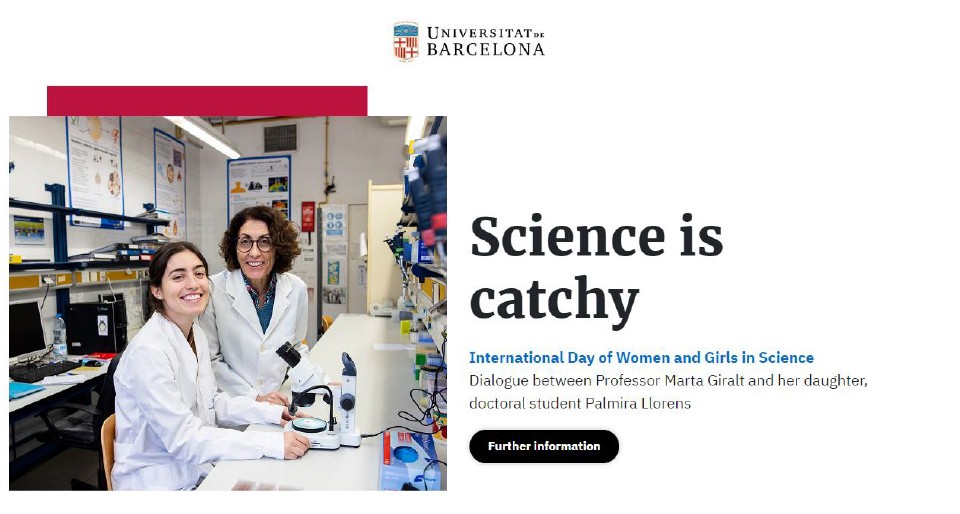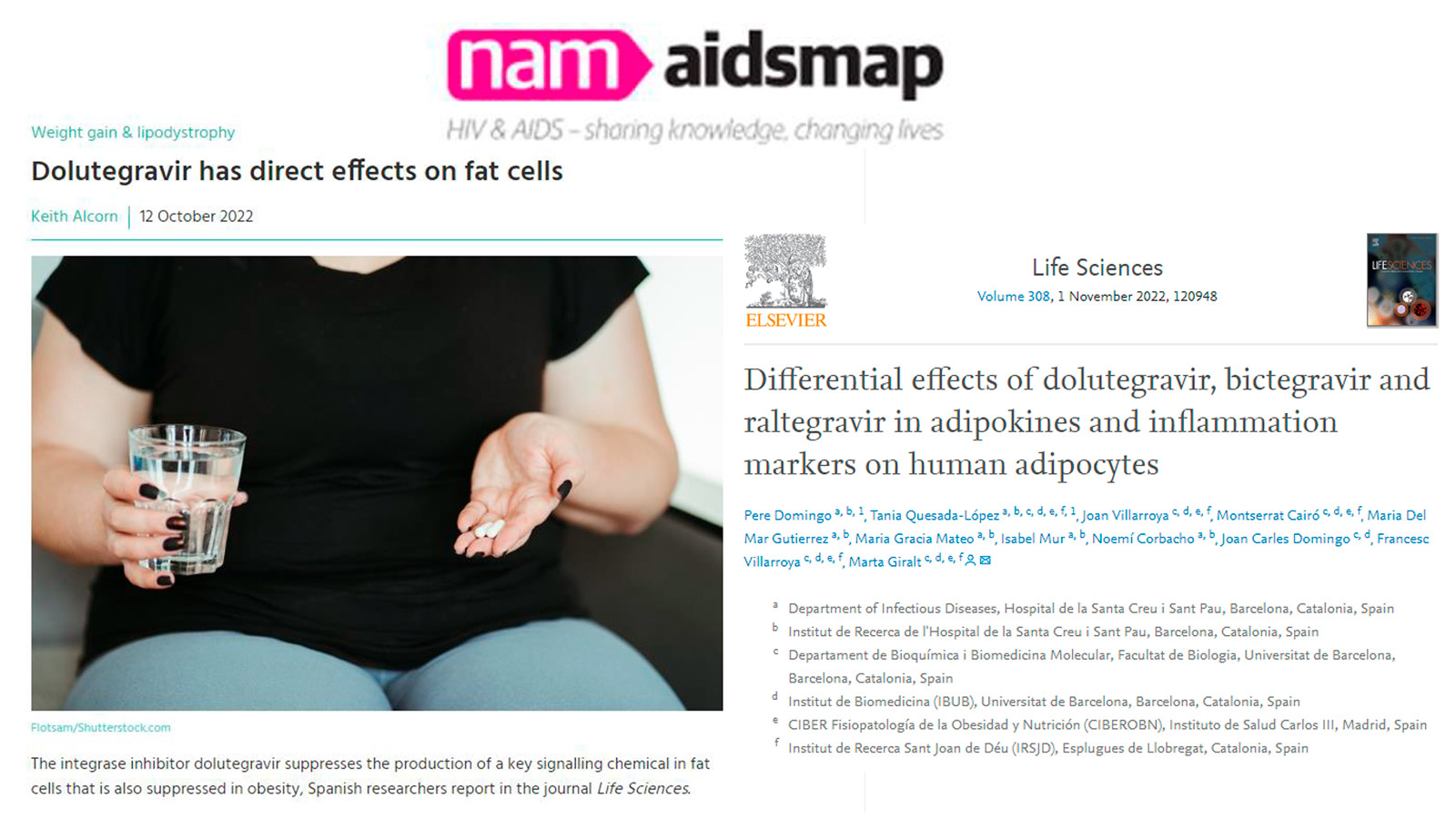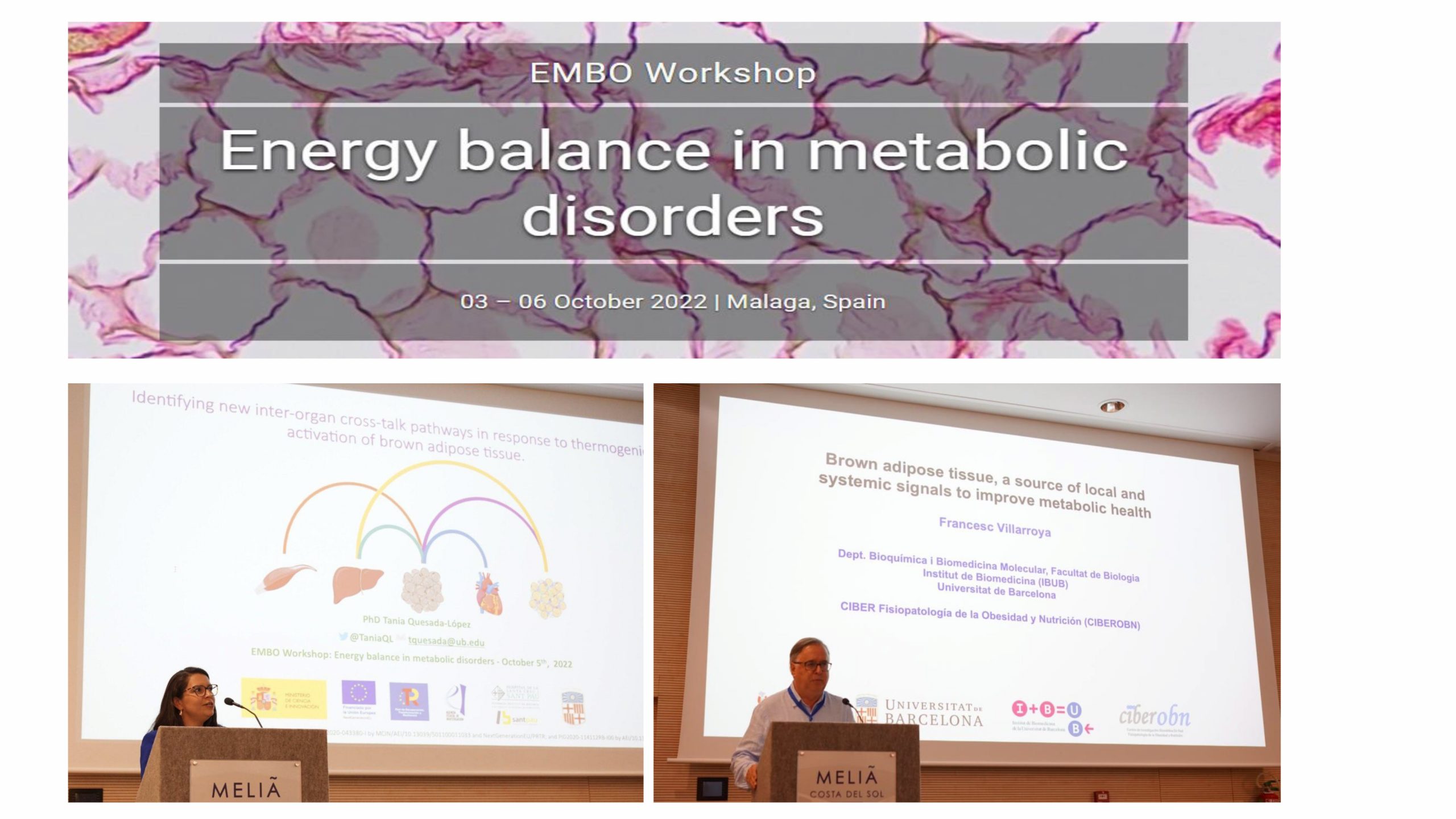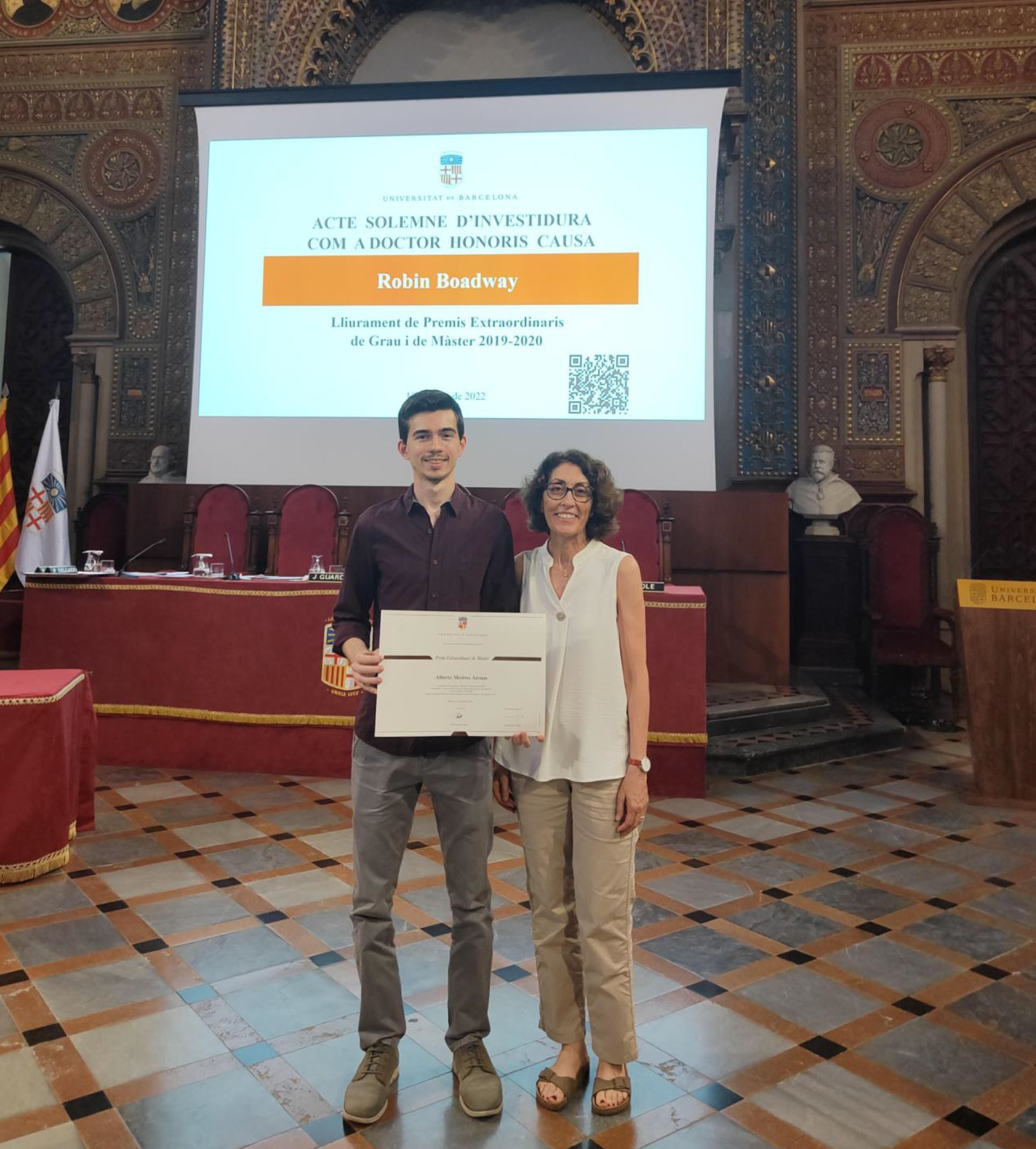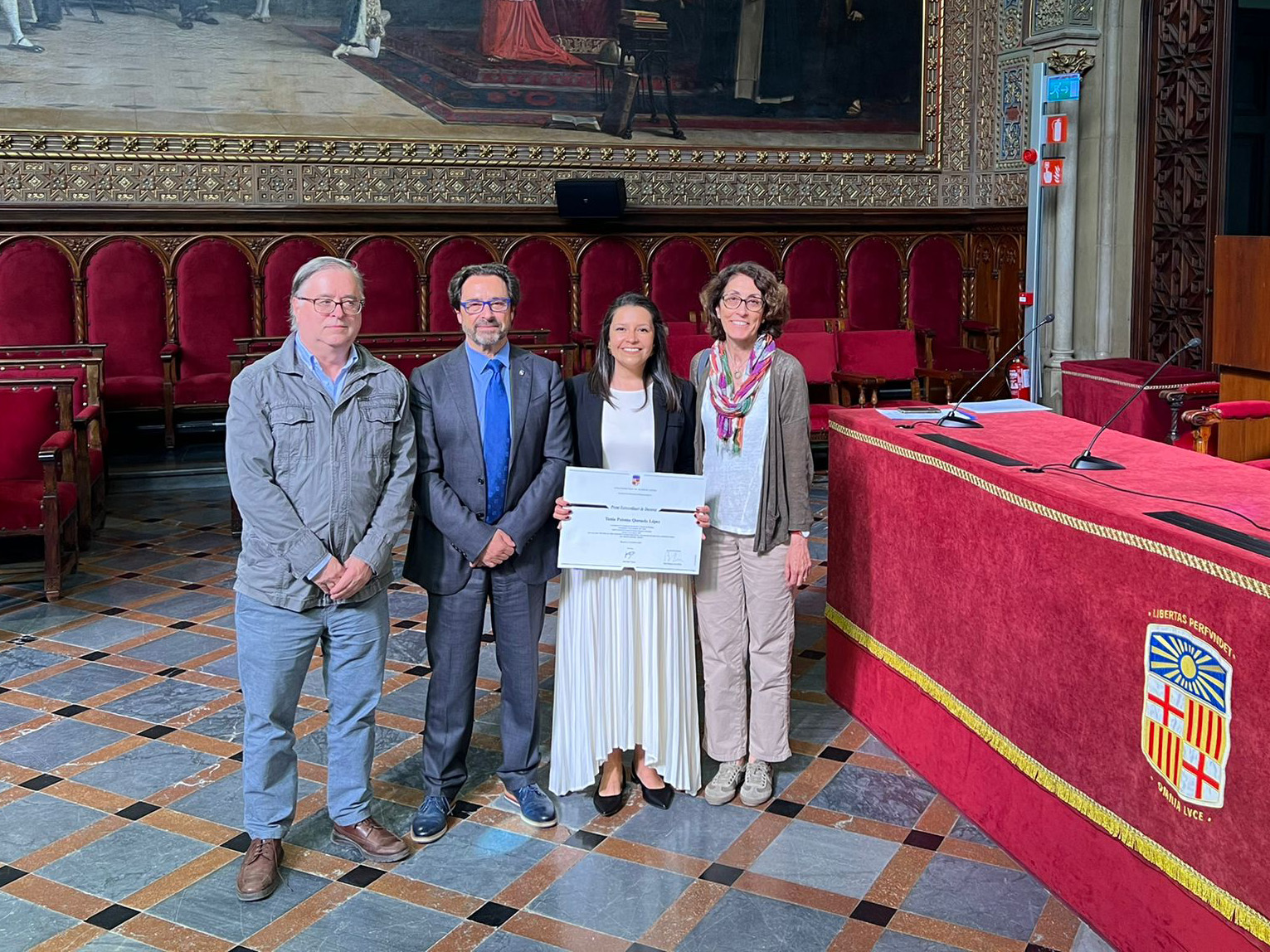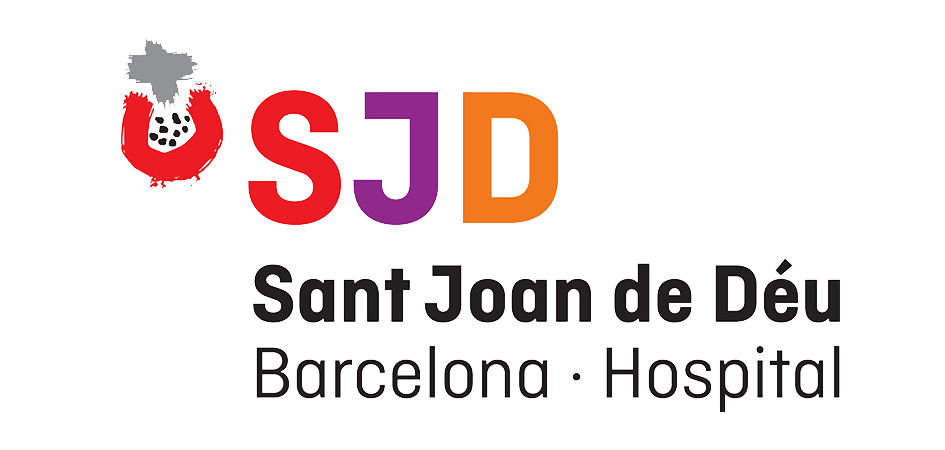
MOLECULAR METABOLISM AND DISEASE
Department of Biochemistry and Molecular Biomedicine Faculty of Biology. University of Barcelona
Our research group is focused on the study of the molecular and physiological basis of control of energy metabolism, and how it relates to human pathologies. We study the molecular mechanisms of brown, beige and white adipocyte plasticity, as well as muscle and hepatic metabolism. Molecular actors conveying new metabolic and endocrine functions of cells, tissues and organs are identified and characterized. Identification of the signaling molecules determining cellular and organ cross-talk is a main research subject.
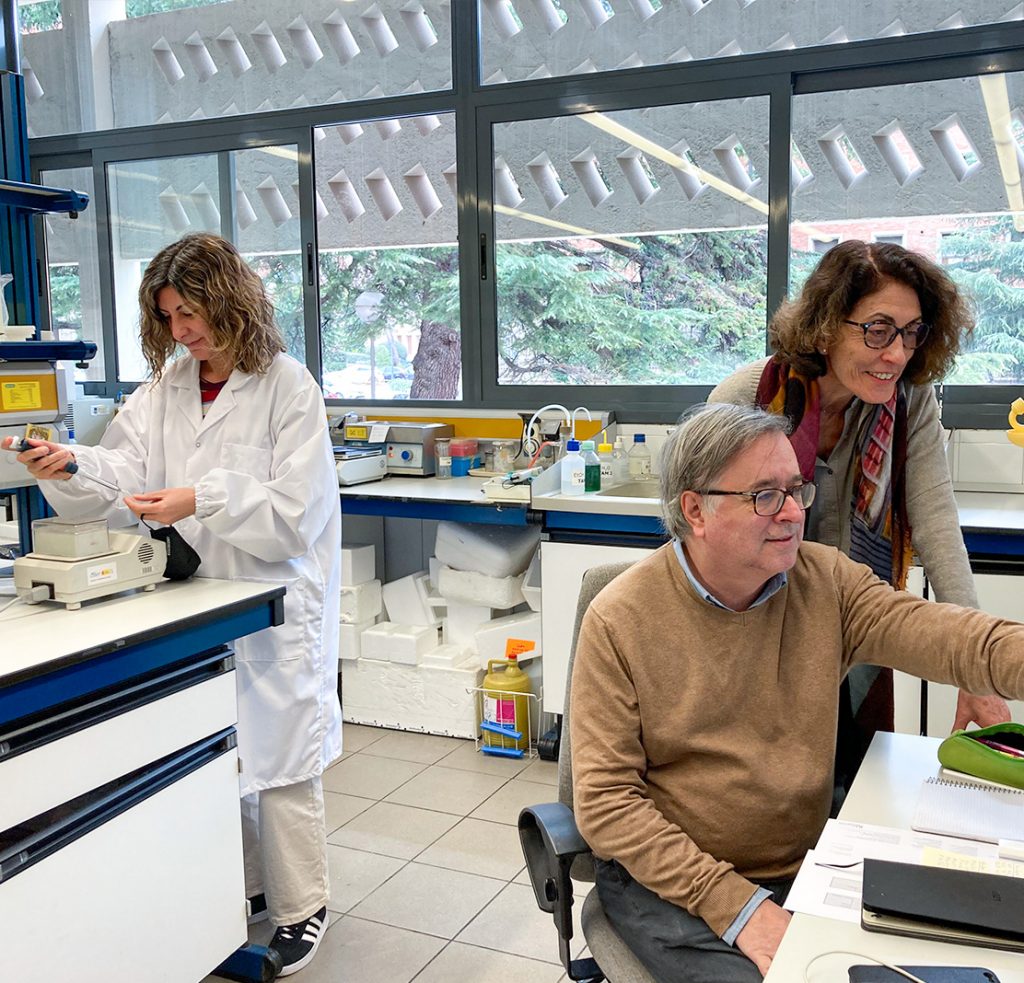
LATEST NEWS
Dr. Joan Villarroya, member of our team and recently appointed associate professor in our University, was selected to present his recent research in the CIBERobn symposium held in Zaragoza the 11-12 June. Disturbances in adipose tissue autophagy were highlighted in relation to obesity-related pathology.
We proudly contributed (a selected presentation by Albert Mestres, PhD student at our team, participation of the lecturer Ruben Cereijo in a round table) in the successful first edition of Early Career Day organized by IBUB, with a fruitful participation of close to one hundred young researchers.
That meeting, held in Copenhagen the 27-31 May gathered worldwide international experts in adipose tissue plasticity. Albert Mestres, PhD, and Marion Peyrou, recently appointed with the prestigious "Ramon y Cajal" researcher position at the University of Barcelona, presented, together with the PI researcher Dr Marta Giralt, the last results of our team on brown adipose tissue signaling properties.
Francesc Villarroya was invited to present our novel findings on human brown adipose tissue adipokines (batokines) recently identified in our laboratory. ENDO2024 was the annual meeting of the Endocrine Society in USA, held in Boston the 1-4 June, 2024.
Marion Peyrou, "Ramon y Calal" researcher, presented results on "Brown adipose tissue activation: a novel strategy to prevent/treat the hepatocarcinogenesis promoted by metabolic lipotoxicity" and Artur Navarro-Gascón, PhD student, presented his work "Meteorin-like regulates the acute phase post-myocardial infarction". Marion Peyrou was awarded with the best poster presentation. Congratulations!
Call addressed to candidates interested in developing a PhD Thesis in a highly
competitive international team on the characterization of new molecular actors
involved in adipose tissue plasticity and their role in metabolic diseases (diabetes,
obesity,..) and aging. See webpage: www.tamweb.es.
The experimentation associated with the thesis will involve integrated last-generation omics technologies in cellular and animal models, as well as translationalassays in samples from human patients.
Salary, years of contract duration and other work conditions will be according to the
standards in official calls from Ministry, Generalitat, UB.
Candidates should have the academic conditions for registering to a PhD program in
the academic year 2024-2025.
Interested candidates contact Dr. Francesc Villarroya by mail (fvillarroya@ub.edu)
attaching a letter of interest and a CV.
In a ceremony in the 18th century building that houses the Academy of Medicine of Catalonia, Dr. Pere Domingo was named a member of the Academy. Dr. Domingo is a long-time collaborator with whom we have been developing translational research on adipose tissue and metabolic alterations in people living with HIV for the last twenty years. Nearly twenty projects financed by public (Carlos III Health Institute, FIPSE, Fundació Marato TV3) and private companies and 70 joint publications account for this fruitful scientific collaboration, currently ongoing. Congratulations, Pere!
Cpril 23, Sant Jordi (Saint George's Day), is celebrated in Catalonia as the "day of the book and the rose." The Faculty of Biology organized a public multilingual reading of fragments of the Catalan book "Canto jo i la muntanya balla" in different languages. Niki Sciarrino, from the University of Hasselt (Belgium) and staying in our laboratory for master's thesis, participated as a reader of a chapter of the book in Dutch. Thank you Niki for your contribution!
Dr Milanski and the student Joao V. Da Silva Domingues are visiting our research team for several months to develop joint research program on the effects of interesterified triglycerides, a growing component of processed food, on metabolism.
A workshop on the subject "Using infrared thermography for measurement of brown adipose tissue in humans", leaded by Dr. Rubén Cereijo, lecturer at our research team, was held last 22 January at Facultat de Biología, Universitat de Barcelona. Infrared thermography is appearing as a very useful tool for non-invasive measurement of brown fat activity, specially useful in humans. Researchers from Institut de Recerca Santa Creu I Sant Pau, University of Campinas and Universidad Miguel Hernández, among others, attended the workshop.
The journal Treballs de la Societat Catalana de Biologia (Societat Catalana de Biologia, associated with Institut d'Estudis Catalans) published the issue 73 (2023), open access (Treballs de la Societat Catalana de Biologia), devoted to women in biological sciences, on occasion of the "International Day of Women and Girls in Science". Marta Giralt, full professor at our research team, coordinated this publication together with Gemma Marfany from the Department of Genetics at our University,. Roser Iglesias, also at our research team, contributes with a biographical report on Gabriela Morreale, a pioneer woman in endocrinology research.
Our team contributed with an invited presentation, oral communication and poster presentation by Francesc Villarroya, Albert Blasco-Roset and Albert Mestres-Arenas in relation to the identification of novel batokines involved in the control of adiposity and metabolism. Fruitful interactions with the Spanish community involved in basic and clinical research on obesity has been developed.
Devoted to interdisciplinary research on the role of adipose tissue in health and disease. The ADIPOBROAD network has been awarded by the Ministry of Science to coordinate research on adipobiology and undertake innovative research on emerging issues such as the importance of gender in adipose tissue, climate change and adiposity, or the key role of adipose tissue in cancer and aging. Ten research teams across Spain, placed at Cordoba, Santiago de Compostela, Pamplona, Tarragona, Girona, Madrid, Valencia and Barcelona will act as members of the network.
Pablo Fernández from Rey Juan Carlos University, Madrid; and Laura Fei, from University of Florence, Italy, completed fruitful research stays at our lab on distinct projects on adipocyte pathophysiology. Our lab is happy to host young promising researchers and we appreciate their input and enthusiasm.
Under the moto "Science is catchy", the University of Barcelona reports a
dialogue between Professor Marta Giralt and her daughter, doctoral student Palmira Llorens. On the occasion of the International Day of Women and Girls in Science, the University of Barcelona released an interview about these issues with two women who live and share research in their closest environment: at home. They are Marta Giralt, from our research team, and her daughter Palmira Llorens, a PhD student in genetics at the UB.
For full information click here.
The Spanish Society of Obesity (SEEDO) organized the “The Day of Obesity” in Spain last
December 15. A highlight was dissemination of the importance of research on brown adipose
tissue activity, why it is protective for obesity and associated diseases, and how current
research envisage the identification of new tools for therapeutic activation of brown fat.
Ruben Cereijo and Marta Giralt from our research team organized an open session to public
volunteers for non-invasive assessment of brown fat activity using infrared thermography as
well as dissemination of the importance of brown fat in the premises of the Faculty of Biology in the University of Barcelona.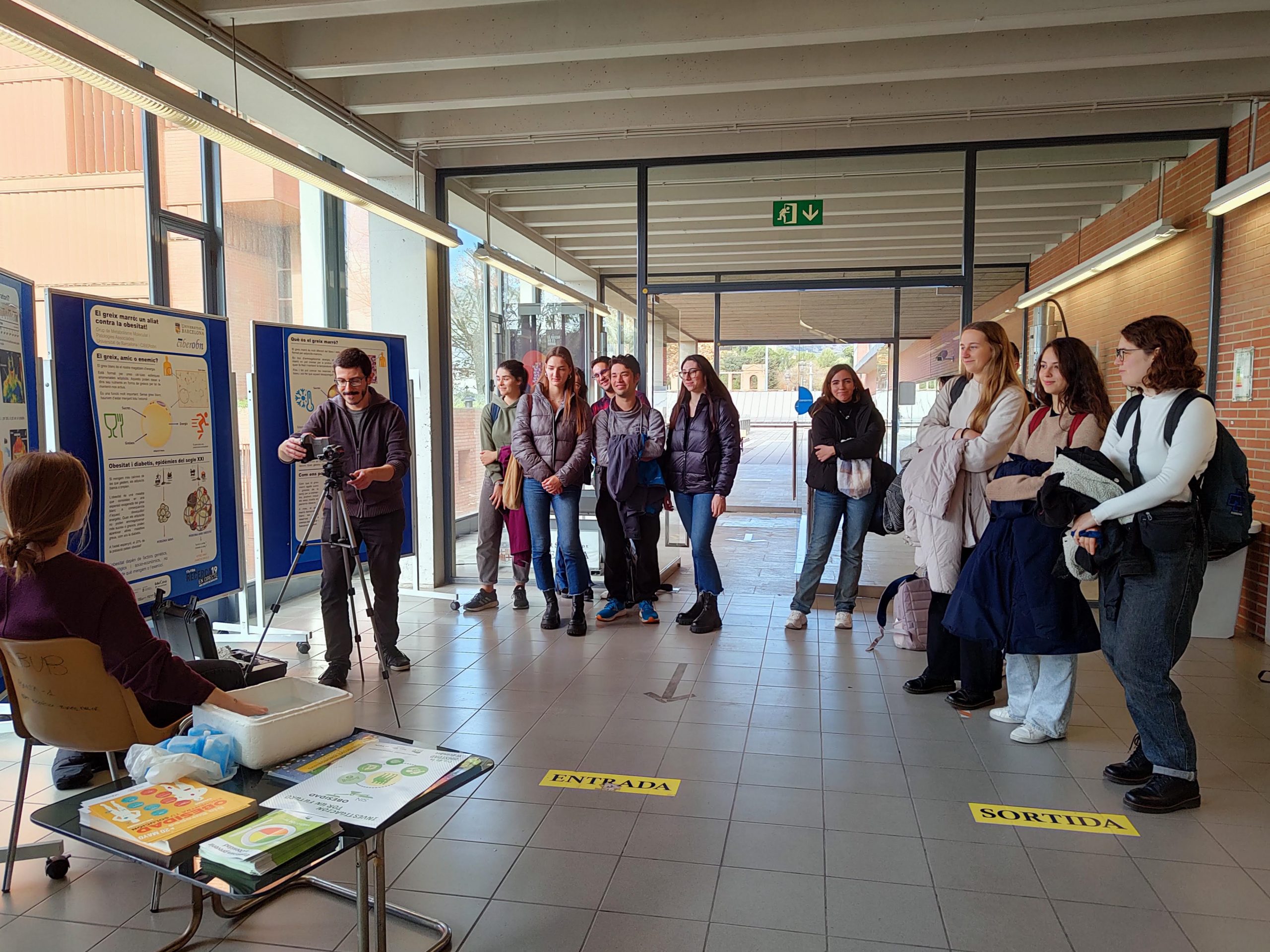
Francesc Villarroya acted as spokesman in a press conference in Madrid organized by SEEDO to highlight the current status and importance of brown adipose tissue research. The “Day of
Obesity” activities by SEEDO have had this year an outstanding coverage in the Spanish media, highlighting the importance of research to achieve successful therapeutic and preventive actions on obesity and the promising research involving brown fat.
Our research team is proud to participate in the celebrations of the 150th anniversary of the first academic year in the Historical Building of the University of Barcelona. A concert by the UB orchestra, in which our team member Dr. Joan Villarroya participates as a violinist, performing concert pieces by Catalan composers, kicks off the commemorative activities.
Increased adiposity is a current concern in people living with HIV treated with the last-generation antiretroviral drugs of the integrase inhibitor family. The platform NAM-AIDSMAP, devoted to provision of independent, accurate & accessible information about HIV, highlights our findings recently published in Life Sciences (doi: 10.1016/j.lfs.2022.120948). We showed that the integrase inhibitor dolutegravir suppresses the production of adiponectin, a chemical secreted by fat tissue that regulates insulin sensitivity, which provides further evidence that dolutegravir can have direct effects on the human cells that store fat (see https://www.aidsmap.com/news/oct-2022/dolutegravir-has-direct-effects-fat-cells).
Our research team contribute to the EMBO workshop “Energy balance in metabolic disorders” in Málaga.
Francesc Villarroya, as invited speaker, Tania Quesada, through a selected communication, and Moisès Castellà through a poster communication, presented our current research on inter-organ singaling and molecular actors involved in metabolism and adipose tissue thermogenic plasticity at the EMBO meeting held in Málaga last 3 to 6 October.
The "2nd symposium of research Institutes at University of Barcelona was devoted to interdisciplinary research on climate change and global warming. In this context, as a contribution from IBUB, Marta Giralt presented the current knowledge and research perpectives on the cross-talk between climate change events and obesity pandemics, and how worldwide altered adiposity is both a consequence and a potential actor in climate change and global warming.
Journal of Endocrinology is the flagship basic science journal of the Society for Endocrinology, and is also an official journal of the European Society of Endocrinology and the Endocrine Society of Australia. See journal's news at https://joe.bioscientifica.com/page/impactfactor/impact-factor-collection.
The Stanford University has released a study on the 2% top influential worldwide scientists according to a complex analysis of publications and citations (see: https://elsevier.digitalcommonsdata.com/datasets/btchxktzyw/3). F. Villarroya and M. Giralt are among this 2% and F.Villarroya is in fact among the 1/1000 most influential worldwide researchers. Regardless of individuals, this success in scientific ranking is exemplifying the excellent task and dedication of everybody in our research team to advance in scientific knowledge and biomedical prospects in our research. Congrats to everybody!.
International Journal of Obesity quotes a selection of articles from 2021, which top the
Dr Tania Quesada was awarded for her PhD thesis supervised by Dr. M.Giralt and Dr. F.Villarroya. Among other contributions, the thesis gave rise to the publication "The lipid sensor GPR120 promotes brown fat activation and FGF21 release from adipocytes." Nature Communications 2016, 7:13479. doi: 10.1038/ncomms13479. The rector of the University of Barcelona gave the award on the occasion of the ceremony in the "Paraninfo" of the University.
LAST PUBLICATIONS
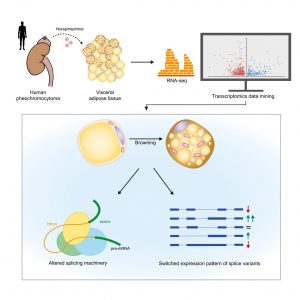
Adipose tissue plasticity in pheochromocytoma patients suggests a role of the splicing machinery in human adipose browning.
Adipose tissue from pheochromocytoma patients acquires brown fat features, making it
a valuable model for studying the mechanisms that control thermogenic adipose
plasticity in humans. Transcriptomic analyses revealed a massive downregulation of
splicing machinery components and splicing regulatory factors in browned adipose
tissue from patients, with upregulation of a few genes encoding RNA-binding proteins
potentially involved in splicing regulation. These changes were also observed in cell
culture models of human brown adipocyte differentiation, confirming a potential
involvement of splicing in the cell-autonomous control of adipose browning. The
coordinated changes in splicing are associated with a profound modification in the
expression levels of splicing-driven transcript isoforms for genes involved in the
specialized metabolism of brown adipocytes and those encoding master transcriptional
regulators of adipose browning. Splicing control appears to be a relevant component of
the coordinated gene expression changes that allow human adipose tissue to acquire a
brown phenotype.
Castellá M, Blasco-Roset A, Peyrou M, Gavaldà-Navarro A, Villarroya J, Quesada-López T, Lorente-Poch L, Sancho J, Szymczak F, Piron A, Rodríguez-Fernández S, Carobbio S, Goday A, Domingo P, Vidal-Puig A, Giralt M, Eizirik DL, Villarroya F, Cereijo R. iScience. 2023, 26:106847
CONTACT US
- 934021523 / 606148772
- g.moreno@ub.edu
- Departament de Bioquímica i Biomedicina Molecular.
Facultat de Biologia (UB)
Avda. Diagonal, 645
Edifici nou Pl. -1
08028 Barcelona







